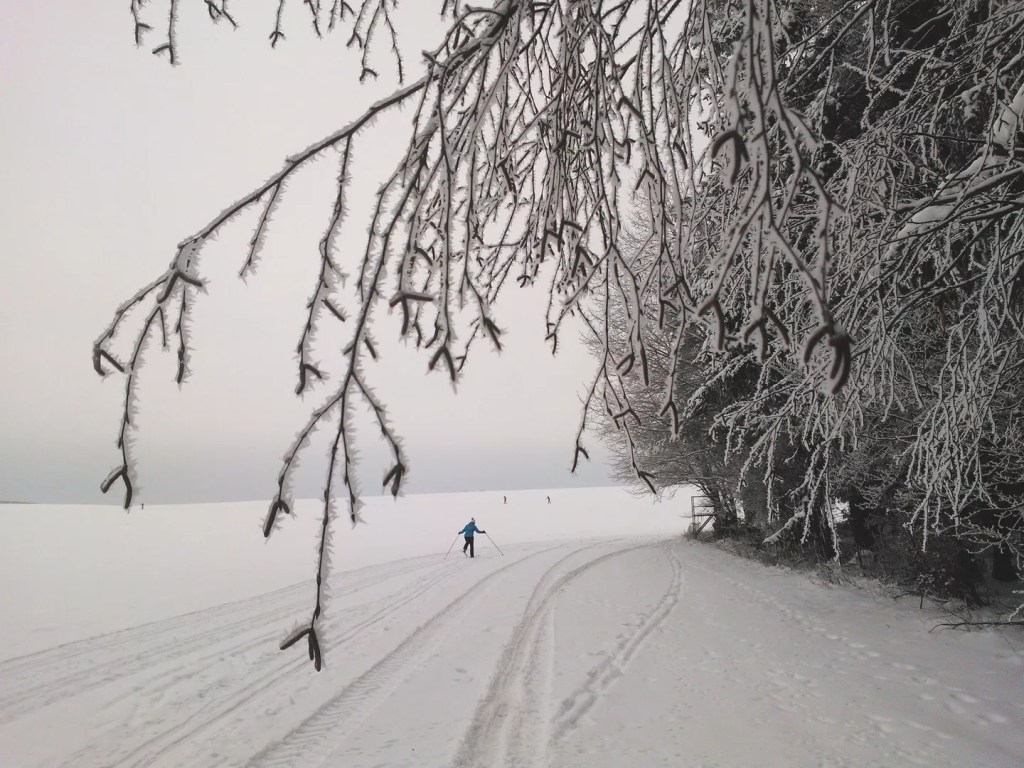The Hudson Valley is no stranger to the craft beverage industry, with wineries, distilleries, and breweries in seemingly every pocket of our verdant Valley. But sake has largely remained an untapped market, often relegated to beverage menus at sushi joints or hibachi restaurants—intimidating to the unacquainted tongue. Craft sake, however, pairs well with food, and can often be seen as a substitute for white wine. For example, a premium sake might feature crisp, fruity notes that melt into a lingering buttery mouthfeel, complementing French favorite Coquilles Saint-Jacques just as well as a Chardonnay.
As Japanese breweries eye international markets, craft sake has been having a moment in the US, seeing slow-yet-steady growth in demand and sales. According to Japanese Sake and Shochu Makers Association, exports of sake to the US more than doubled in little over a decade, going from four million liters in 2011 to over 10 million liters in 2022. And with the opening of Hyde Park’s brand new $85 million sake brewery, Dassai Blue—located just up the hill from the Culinary Institute of America and right down Route 9 from foodie-haven Rhinebeck—it’s the perfect time to shine a light on the nuances and versatility of this ancient beverage.
A Long History
The Sakurai family of Japan chose Hyde Park as the location to host the first US-based operation of their hugely successful sake brewery, Asahi Shuzo, best known for its high-end brand, Dassai. After five years of planning and building, including a year-and-a-half setback due to the pandemic, the Dassai Blue Brewery is expected to open to the public late October for tastings and tours.

“We chose the Hudson Valley because it’s a beautiful area with a growing interest in craft sake,” says company Chairman Hiroshi Sakurai, through a Japanese translator. “By establishing ourselves here, we can understand American culture, and Hudson Valley culture, and incorporate them both into our process of making high-quality beverages.”
Although the Hyde Park location is a much smaller operation than the Japanese brewery, it’s a state-of-the-art facility that can produce up to 140,000 cases each year. Even though Dassai is the 10th largest sake brand in Japan by volume, they still utilize traditional methods passed down for generations—the brewery’s origin dates back to the 1700s in the Yamaguchi Prefecture of southern Japan, where it’s still located. In 1948 the Sakurai family took over the brewery and dubbed it Asahi Shuzo; nearly 40 years later, in 1984, Hiroshi Sakurai became the third-generation CEO and focused the company on producing high-quality, small batch sake; this catapulted the business from rural brewery into international acclaim. In 2015, Hiroshi stepped into the role as chairman, allowing his eldest son, Kazuhiro, to become the fourth-generation CEO. As of last year, sales grew to $118 million USD, making Asahi Shuzo the fourth-highest grossing sake brewer in Japan.

“There are a few reasons for this steady growth,” Sakurai explains. “One is because we have a heavy focus on the customer, producing more of what customers prefer to drink. Another reason is because Japanese culture has shifted, both because women have started drinking more sake, but also because the culture is becoming less about drinking and more about tasting. In the US, there has already been a tasting culture, such as with wine and spirits, and now more people are trying sake. It’s been slow changes over the past few decades, but these shifts are noticeable.”
The Magic of Koji
Dassai Blue’s Hyde Park campus is spread among three buildings: a rice-polishing facility, a wastewater center, and the brewery and tasting room. The company employed Japanese architect Jun Mitsui, who is known for designing high-rises and corporate buildings in Japan like Haneda Airport’s international terminal and the headquarters of Coca-Cola Japan. Mitsui collaborated with American architectural firm CPCA, who helped with understanding US laws and regulations. “We started building in 2018, and finished May 2023,” Sakurai says. “We made a lot of changes over that time to ensure we created the best version of the design. The building features elements of Japan, as opposed to having a more industrial look, because we wanted it to become a landmark in Hyde Park” he says.

For a little insight into sake-making, the beverage is made from rice, water, a fungus called koji, and yeast. It takes about 120 days to go from grain to glass. Different types of rice produce their own flavors, and Asahi Shuzo only uses Yamada Nishiki sourced from farmers in the Hyogo Prefecture—a region famous for producing durable, flavorful rice. “We also have an annual contest for Yamada Nishiki farmers around other parts of Japan, and we use the winning rice to make a very exclusive type of sake,” Sakurai says. “And we offer a cash prize. For the first contest, the winner took home $200,000. This year was our fifth contest and the prize was up to $300,000.” In 2022, some of the sake created from the winning rice was put into auction through Sotheby’s; one 720 mL bottle sold for nearly $8,000.
The brewing process begins with polishing rice grains down to a fraction of their size; the more a rice grain is polished, the richer and more delicate of a taste it can provide. When rice has been milled by 50 percent or more, it’s considered to be the highest grade for sake-making, known as Junmai Daiginjo.
All Dassai products are considered Junmai Daiginjo and typically named after the amount of grain that’s left behind after milling. For example, one of the brewery’s most popular beverages is Dassai 23. For this, 77 percent of each rice grain is polished away, leaving 23 percent of its original size. The Dassai 23 sake was first introduced in 1990 and grew so popular in Japan that it became the first-ever sake offered at a White House Banquet in 2015—former President Obama wanted to surprise the prime minister of Japan with a high-quality sake, and Dassai 23 was chosen for the honor.
Once rice is polished, it’s then washed before being steamed. During washing, gray water is sent through a state-of-the-art wastewater facility located behind the brewery. A cool $7 million was spent on this treatment center. “The water that goes through here flows into the Hudson River, so we wanted to make sure that the water is filtered clean, as part of our commitment to sustainability,” he says. “It’s actually filtered so cleanly that the water we’re putting into the river is making the river cleaner. The official who came to approve the facility said it was the most beautifully made wastewater building he’s seen.”
Next, the rice goes into the koji room for a traditional application of the fungus—which is technically a type of mold, and the key element to providing sake’s notes of pear and fruit. Visitors who opt for a tour of the brewery can view this room through a window, and might be lucky enough to witness the process, during which the rice is spread evenly on flat tables and a koji crew enact coordinated shaking of spores while slowly marching around each table; it’s a captivating ceremony to watch. Once koji is applied, the rice is kept at a temperature just low enough to not kill the fungus, but also to not allow it to feed; this process is what encourages the fruity, elegant aroma.
Last, the rice is put in fermentation tanks for 30 days, before bottling and pasteurization. “Even though it’s a large production, craftsmanship by hand is still very important,” Sakurai says.
A New Type of Taproom
At opening, Dassai Blue is starting out by offering three beverage options: Dassai Blue Type 23, Type 35, and Type 50. In the beginning, they’ll be made with Yamada Nishiki rice brought over from Japan, but they will eventually use Yamada Nishiki grown from a farm in Arkansas that Sakurai says uses the same traditional methods and will uphold the same expected quality.
It’s worth noting that the original Dassai 23 will taste slightly different from the Dassai Blue Type 23. The former is described in tasting notes as “smooth, refined, light, long finish, with elegant sweetness” whereas the latter features an “elegant and glamorous fragrance with complex and powerful flavor.”
Dassai Blue sake will be available first solely at the brewery and taproom, and eventually at restaurants both locally and in New York City. The taproom will also have a few food options—mainly small plates, like a traditional cheese plate or Japanese charcuterie with vegetables sourced from local farms. The brewery is also hoping to work with local farms to provide leftover mash as animal feed or potential beauty products, as is traditionally done in the Japanese operation.
And Sakurai will oversee it all. “I’ll be living both here and in Japan in the beginning because I want to help ensure that Dassai Blue maintains the same quality expected from Dassai in Japan—not just in terms of making sake, but also our commitment to sustainability and community,” Sakurai says. He notes that this is why the local brewery features the addition of Blue in the name—it stems from a Japanese proverb that translates to: “Although blue dye comes from the indigo plant, it is bluer than indigo,” conveying the idea of the student becoming the master. The proverb aligns with the company’s goals of having Dassai Blue eventually match the success of its Japanese counterpart.
“It’s not just about following tradition, but about always producing better sake,” Sakurai says. “Our production teams are hungry to make better sake, and want to revolutionize sake making. They’re not afraid to try something different. We’re still based in tradition, but we build from there.”
Dassai Blue, 5 St. Andrews Road in Hyde Park, plans to be open to the public by the end of October. View their website for updates: Asahishuzo.ne.jp/dassaiblue.
This article appears in September 2023.

















